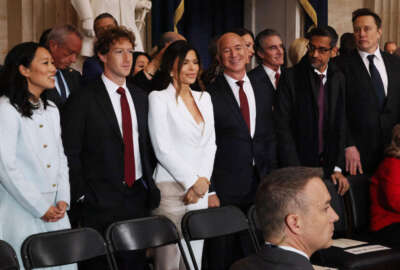Congress inches to modern tech
One way Congress might improve is if it upgraded the way in which it communicates to the public. Congressional agencies like the Government Accountability Office...
Bashing Congress is like picking your nose. Everyone does it, except the Congress-bashing is usually public. Plus, the conditions that induce these behaviors always return.
To be sure, Congress does present a puzzle. Talk to members individually, and you encounter seemingly normal, down-to-earth people. Reasonable people. Mostly. But somehow the institution adds up to a distorted whole, like a house with no square corners.
For a variety of reasons — no more earmarks, social-media-induced disruption, the polarization of America, you name it — members seem less inclined to negotiate and more to cross their arms in defiance. Heaven knows how they get back to the imagined golden days of comity and bipartisanship. Like when those softies Lyndon Johnson (arm-twister) and Sam Rayburn (Board of Education) ran things.
Anyhow, we all sent ’em there, so bashing Congress never seems like a particularly productive activity.
But that’s all politics. One way Congress might improve is if it upgraded the way in which it communicates to the public. My series of interviews, Modernizing the Congress, revealed this thread. As Alan McQuinn of the Information Technology and Innovation Council points out, committee, commission, and legislative agency sites mostly lack security, usability, and mobile presentation standards considered state of the art. In visiting committee sites, I’ve found them to be so different from one another as to add up to an incoherence when looking for certain items they should have in common. For instance, hearings schedules, press releases, or issues documents.
I received a lot of flak, so to speak, both good and bad, for my recent column on federal agency public affairs offices. Members of Congress have press people, but because of the way capitals work, a small army of reporters sort of lives on Capitol Hill, and the proximity begets access. My own work involves reaching out electronically from my lair in upper Northwest D.C. (I can see the National Cathedral spires from my window, not the Capitol dome). But I’ve found that many members will agree to interviews if only I can get through to the right aides. Those aides constitute a mixed bag when it comes to responsiveness.
The technology with which Congress does its own business could stand some attention, according to Seamus Kraft, executive director of the Opengov Foundation. One example: A modern legislative processing system capable of producing documents that show only the changes in bills that update earlier laws.
A group exists on Capitol Hill called the Congressional Tech Staff Association. We emailed and made repeated phone calls to the Republican and Democratic leaders of this group, but got no response. It’s not unusual for congressional staff to be reticent. But I would like to know what they feel their technology base ought to be, and whether it is adequate for the importance and volume of work that occurs on the Hill. Members want the attention for themselves.
You can’t order a flag flown over the Capitol online. Congressional offices have a downloadable PDF form you must fill out and mail in. Flags come a few weeks later in the mail, or you can pick them up at the local field office. This isn’t Amazon. Maybe that’s good. Someone has to haul flags up and down the flagpole all day to create the supply of flown flags, so the download-print-and-mail sequence might limit the demand.
Still, Congress has made a lot of progress. For instance, those same committees post videos of recent hearings. They’re are invaluable for the press and for anyone else who wants to see and hear for themselves — unfiltered by the media — who spoke, what they said and how they did it. Congressional agencies like the Government Accountability Office and the Government Publishing Office have made tangible modernizing strides in recent years. From the Hill itself, Members use social media to reach more people faster, and it doesn’t take franking dollars.
Copyright © 2025 Federal News Network. All rights reserved. This website is not intended for users located within the European Economic Area.
Tom Temin is host of the Federal Drive and has been providing insight on federal technology and management issues for more than 30 years.
Follow @tteminWFED







